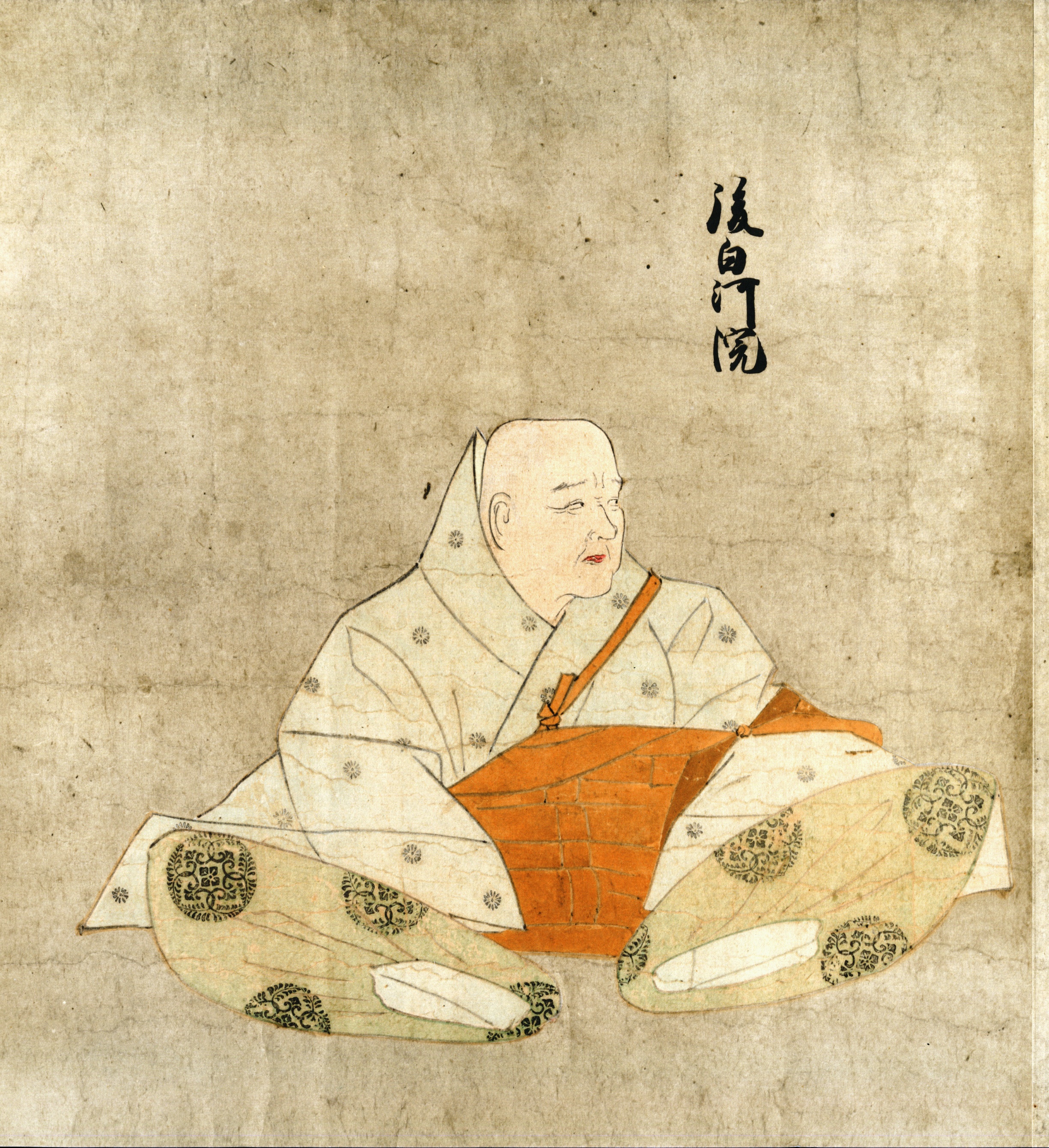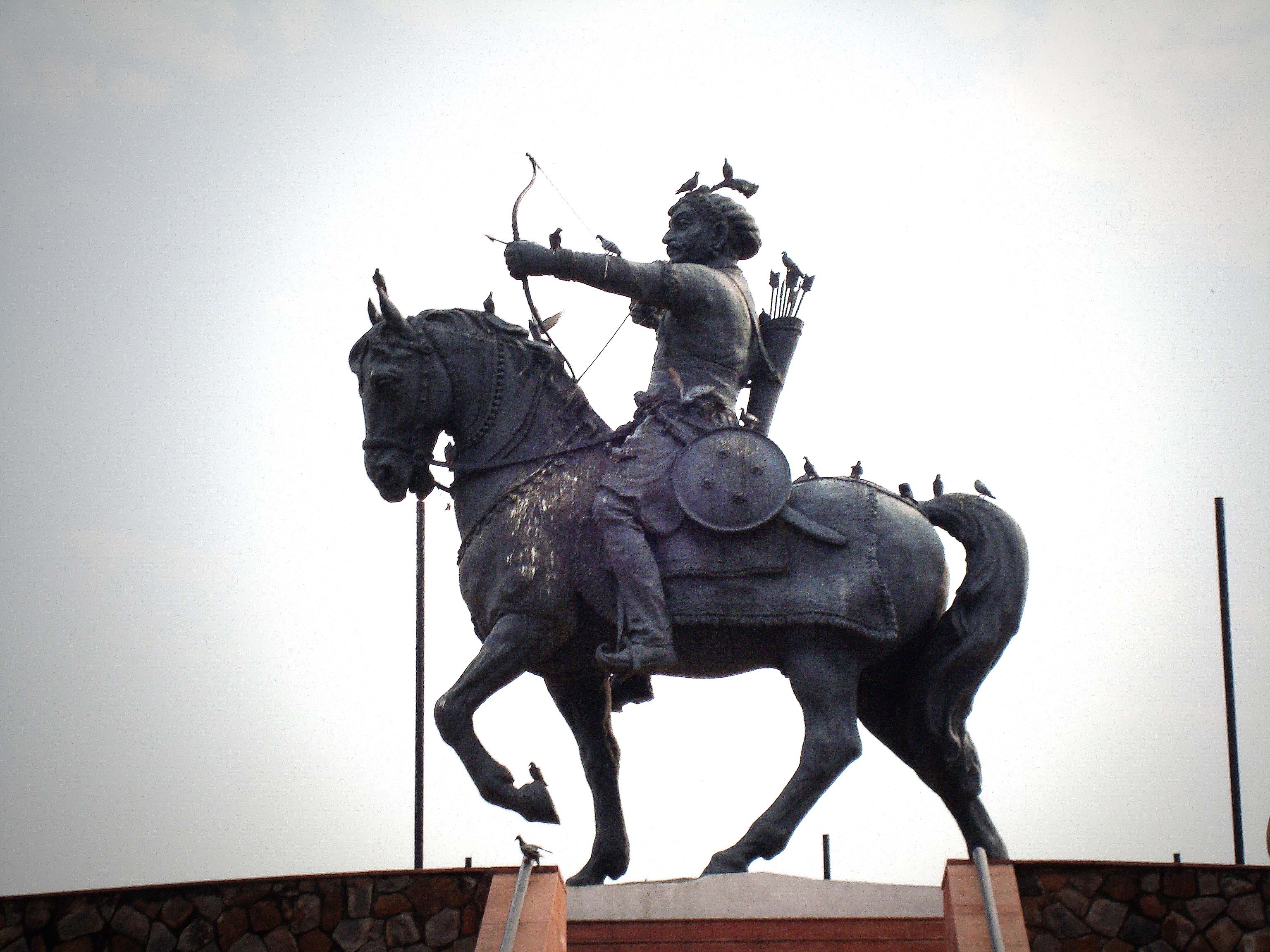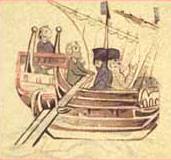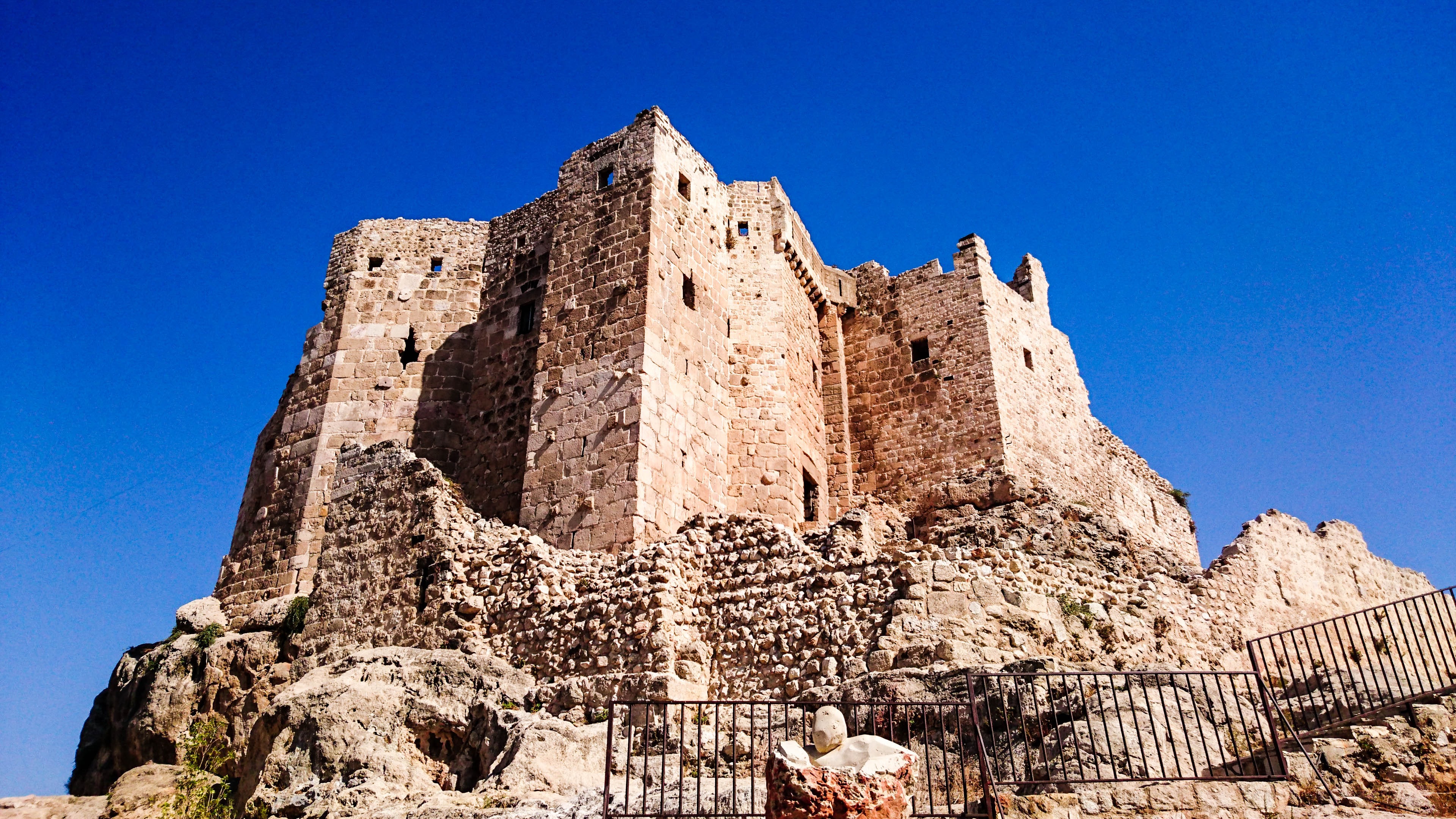|
1192
Year 1192 ( MCXCII) was a leap year starting on Wednesday (link will display the full calendar) of the Julian calendar, the 1192nd year of the Common Era (CE) and Anno Domini (AD) designations, the 192nd year of the 2nd millennium, the 92nd year of the 12th century, and the 3rd year of the 1190s decade. Events * January 7 – Venus occults Jupiter. * April 28 – Conrad of Montferrat (Conrad I), King of Jerusalem, is assassinated in Tyre, only days after his title to the throne is confirmed by election. The killing is carried out by Hashshashin, later the basis of folk etymology for the English word "assassin." * August 21 – Minamoto no Yoritomo is granted the title of ''shōgun'', thereby officially establishing the first shogunate in the history of Japan. *Margaritus of Brindisi is created the first Count of Malta for capturing Constance, Holy Roman Empress in 1191. *Second Battle of Tarain in India: The Ghurid forces of Mu'izz al-Din are victorious over Prithviraj ... [...More Info...] [...Related Items...] OR: [Wikipedia] [Google] [Baidu] |
Kings Of Jerusalem
The King of Jerusalem was the supreme ruler of the Kingdom of Jerusalem, a Crusader state founded in Jerusalem by the Latin Catholic leaders of the First Crusade, when the city was conquered in 1099. Godfrey of Bouillon, the first ruler of the Kingdom of Jerusalem, refused the title of king choosing instead the title , that is Advocate or Defender of the Church of the Holy Sepulchre. In 1100 Baldwin I, Godfrey's successor, was the first ruler crowned as king. The crusaders in Jerusalem were conquered in 1187, but their Kingdom of Jerusalem survived, moving the capital to Acre in 1191. Crusaders re-captured the city of Jerusalem in the Sixth Crusade, during 1229–1239 and 1241–1244. The Kingdom of Jerusalem was finally dissolved with the fall of Acre and the end of the Crusades in the Holy Land in 1291. Even after the Crusader States ceased to exist, the title of "King of Jerusalem" was claimed by a number of European noble houses descended from the kings of Cyprus or th ... [...More Info...] [...Related Items...] OR: [Wikipedia] [Google] [Baidu] |
Prithviraj Chauhan
Prithviraja III ( IAST: Pṛthvī-rāja; reign. – 1192 CE), popularly known as Prithviraj Chauhan or Rai Pithora, was a king from the Chauhan (Chahamana) dynasty who ruled the territory of Sapadalaksha, with his capital at Ajmer in present-day Rajasthan. Ascending the throne as a minor in 1177 CE, Prithviraj inherited a kingdom which stretched from Thanesar in the north to Jahazpur (Mewar) in the south, which he aimed to expand by military actions against neighbouring kingdoms, most notably defeating the Chandelas. Prithviraj led a coalition of several Rajput kings and defeated the Ghurid army led by Muhammad Ghori near Taraori in 1191 AD. However, in 1192 CE, Ghori returned with an army of Turkish mounted archers and defeated the Rajput army on the same battlefield. Prithviraj fled the battlefield, but was captured near Sirsa and executed. His defeat at Tarain is seen as a landmark event in the Islamic conquest of India, and has been described in several semi-lege ... [...More Info...] [...Related Items...] OR: [Wikipedia] [Google] [Baidu] |
Ghurid Empire
The Ghurid dynasty (also spelled Ghorids; fa, دودمان غوریان, translit=Dudmân-e Ğurīyân; self-designation: , ''Šansabānī'') was a Persianate dynasty and a clan of presumably eastern Iranian Tajik origin, which ruled from the 10th-century to 1215. The Ghurids were centered in the Ghor of present-day central Afghanistan, where they initially started out as local chiefs. They gradually converted to Sunni Islam from Buddhism after the conquest of Ghor by the Ghaznavid ruler Mahmud of Ghazni in 1011. The dynasty ultimately overthrew the Ghaznavid Empire when Muhammad of Ghor conquered the last Ghaznavid principality of Lahore in 1186 from Khusrau Malik. The Ghurids initially ruled as vassals of the Ghaznavids and later of the Seljuks. However, during the early twelfth century the long-standing rivalry between the Seljuks and Ghaznavids created a power vacuum in Khurasan which the Ghurids took advantage of and began their territorial expansion. Ala al-Din Husa ... [...More Info...] [...Related Items...] OR: [Wikipedia] [Google] [Baidu] |
Conrad Of Montferrat
Conrad of Montferrat ( Italian: ''Corrado del Monferrato''; Piedmontese: ''Conrà ëd Monfrà'') (died 28 April 1192) was a nobleman, one of the major participants in the Third Crusade. He was the ''de facto'' King of Jerusalem (as Conrad I) by virtue of his marriage to Isabella I of Jerusalem from 24 November 1190, but officially elected only in 1192, days before his death. He was also the eighth Marquess of Montferrat from 1191. Early life Conrad was the second son of Marquess William V of Montferrat, "the Elder", and his wife Judith of Babenberg. He was a first cousin of Frederick Barbarossa, Holy Roman Emperor, as well as Louis VII of France and Leopold V of Austria. Conrad was born in Montferrat, which is now a region of Piedmont, in northwest Italy. The exact place and year are unknown. He is first mentioned in a charter in 1160, when serving at the court of his maternal uncle, Conrad, Bishop of Passau, later Archbishop of Salzburg. (He may have been named after him ... [...More Info...] [...Related Items...] OR: [Wikipedia] [Google] [Baidu] |
Shogunate
, officially , was the title of the military dictators of Japan during most of the period spanning from 1185 to 1868. Nominally appointed by the Emperor, shoguns were usually the de facto rulers of the country, though during part of the Kamakura period, shoguns were themselves figureheads, with real power in hands of the Shikken of the Hōjō clan. The office of shogun was in practice hereditary, though over the course of the history of Japan several different clans held the position. The title was originally held by military commanders during Heian period in the eighth and ninth centuries. When Minamoto no Yoritomo gained political ascendency over Japan in 1185, the title was revived to regularize his position, making him the first shogun in the usually understood sense. The shogun's officials were collectively referred to as the ; they were the ones who carried out the actual duties of administration, while the Imperial court retained only nominal authority.Beasley, William G ... [...More Info...] [...Related Items...] OR: [Wikipedia] [Google] [Baidu] |
Shōgun
, officially , was the title of the military dictators of Japan during most of the period spanning from 1185 to 1868. Nominally appointed by the Emperor, shoguns were usually the de facto rulers of the country, though during part of the Kamakura period, shoguns were themselves figureheads, with real power in hands of the Shikken of the Hōjō clan. The office of shogun was in practice hereditary, though over the course of the history of Japan several different clans held the position. The title was originally held by military commanders during Heian period in the eighth and ninth centuries. When Minamoto no Yoritomo gained political ascendency over Japan in 1185, the title was revived to regularize his position, making him the first shogun in the usually understood sense. The shogun's officials were collectively referred to as the ; they were the ones who carried out the actual duties of administration, while the Imperial court retained only nominal authority.Beasley, William ... [...More Info...] [...Related Items...] OR: [Wikipedia] [Google] [Baidu] |
Second Battle Of Tarain
The Second Battle of Tarain was fought in 1192 between the Ghurid forces of Muhammad Ghuri and the Rajput Confederacy of Prithviraj Chauhan. It took place near Tarain (modern Taraori), which is , north of Delhi. The battle ended in a decisive victory for the invading Ghurids and their successful penetration in north Indian plain. The battle is regarded as a watershed event in Medieval India history as it led to the destruction of Rajput powers for a while and laid the foundation of Muslim rule in North India, which led to the establishment of Delhi Sultanate. Background Prithviraj Chauhan's forces had defeated the Ghurids at the First Battle of Tarain in 1191. The Ghurid king Mu'izz al-Din, who was seriously injured in the battle, returned to Ghazni, and made preparations to avenge his defeat. Historians generally date the second battle of Tarain to 1192, although there is a possibility that it happened in late 1191. Size of the forces According to the 16th-17th cent ... [...More Info...] [...Related Items...] OR: [Wikipedia] [Google] [Baidu] |
Mu'izz Al-Din
Mu'izz ad-Din Muhammad ibn Sam ( fa, معز الدین محمد بن سام), also Mu'izz ad-Din Muhammad Ghori, also Ghūri ( fa, معز الدین محمد غوری) (1144 – March 15, 1206), commonly known as Muhammad of Ghor, also Ghūr, or Muhammad Ghori, also Ghūri, was a ruler from the Ghurid dynasty based in what is today Afghanistan who ruled from 1173 CE to 1206 CE. He extended the Ghurid dominions eastwards and laid the foundation of Islamic rule in the Indian Subcontinent, which lasted after him for nearly half a millennium. During his joint reign with his brother Ghiyasuddin Ghori (r. c. 1163–1203), the Ghurids reached the epogee of their territorial expansion. During his early military career as a prince and governor of the southern tract of the Ghurid Empire, Muhammad subjugated the Oghuz tribe after multiple raids and captured Ghazna where he was crowned by his brother Ghiyasuddin Ghori, who was ruling from his capital Firozkoh since 1163. Muhammad of ... [...More Info...] [...Related Items...] OR: [Wikipedia] [Google] [Baidu] |
Minamoto No Yoritomo
was the founder and the first shogun of the Kamakura shogunate of Japan, ruling from 1192 until 1199.Nussbaum, Louis-Frédéric. (2005). "Minamoto no Yoriie" in . He was the husband of Hōjō Masako who acted as regent ('' shikken'') after his death. Yoritomo was the son of Minamoto no Yoshitomo and belonged to Seiwa Genji's prestigious Kawachi Genji family. After setting himself the rightful heir of the Minamoto clan, he led his clan against the Taira clan from his capital in Kamakura, beginning the Genpei War in 1180. After five years of war, he finally defeated the Taira clan in the Battle of Dan-no-ura in 1185. Yoritomo thus established the supremacy of the warrior samurai caste and the first shogunate ('' bakufu'') at Kamakura, beginning the feudal age in Japan, which lasted until the mid-19th century. Early life Yoritomo was the third son of Minamoto no Yoshitomo, heir of the Minamoto ( Seiwa Genji) clan, and his official wife, Yura-Gozen, daughter of Fujiw ... [...More Info...] [...Related Items...] OR: [Wikipedia] [Google] [Baidu] |
Constance, Queen Of Sicily
Constance I ( it, Costanza; 2 November 1154 – 27 November 1198) was reigning Queen of Sicily from 1194–98, jointly with her spouse from 1194 to 1197, and with her infant son Frederick II, Holy Roman Emperor, in 1198, as the heiress of the Norman kings of Sicily. She was also Holy Roman Empress and later Dowager by marriage to Henry VI, Holy Roman Emperor. When she was young, as the sole heir to the throne of Sicily, she didn't marry until she was 30 because of an ominous prophecy; shortly after becoming empress she was involved in the succession war against her illegitimate nephew King Tancred of Sicily for the Sicilian throne, during which, rarely for an empress, she was captured during such an offensive campaign, though finally without danger she escaped. In the history of Holy Roman Empire only two empresses had ever been captured, the other being her mother-in-law Empress Beatrice. Shortly before ascending the Sicilian throne, at the advanced age of 40, she gave b ... [...More Info...] [...Related Items...] OR: [Wikipedia] [Google] [Baidu] |
Count Of Malta
The County of Malta was a feudal lordship of the Kingdom of Sicily, relating to the islands of Malta and Gozo. Malta was essentially a fief within the kingdom, with the title given by Tancred of Sicily the Norman king of Sicily to Margaritus of Brindisi in 1192 who earned acclaim as the Grand Admiral of Sicily. Afterwards the fiefdom was passed from nobleman to nobleman remaining as a family possession in a few instances. It was used mainly as a bargaining tool in Sicilian politics leading to a rather turbulent history. The fiefdom was elevated to a Marquisate in 1392 and either title was no longer used after 1429. Early Period The first Count of Malta was Margaritus of Brindisi, a sailor of Greek descent or origin from the city of Brindisi (Southern Italy). He was granted the fief by Tancred of Lecce, then King of Sicily, for his service as admiral for the Kingdom, known at the time as ammiratus ammiratorum. The title was granted in 1192, perhaps for his unexpected succes ... [...More Info...] [...Related Items...] OR: [Wikipedia] [Google] [Baidu] |
Hashshashin
The Order of Assassins or simply the Assassins ( fa, حَشّاشین, Ḥaššāšīn, ) were a Nizārī Ismāʿīlī order and sect of Shīʿa Islam that existed between 1090 and 1275 CE. During that time, they lived in the mountains of Persia and in Syria, and held a strict subterfuge policy throughout the Middle East through the covert murder of Muslim and Christian leaders who were considered enemies of the Nizārī Ismāʿīlī State. The modern term assassination is believed to stem from the tactics used by the Assassins. Nizārī Ismāʿīlīsm formed in the late 11th century after a succession crisis within the Fatimid Caliphate between Nizār ibn al-Mustanṣir and his half-brother, caliph al-Musta‘lī. Contemporaneous historians include Arabs ibn al-Qalanisi and Ali ibn al-Athir, and the Persian Ata-Malik Juvayni. The first two referred to the Assassins as ''batiniyya'', an epithet widely accepted by Ismāʿīlīs themselves. Overview The Nizari Is ... [...More Info...] [...Related Items...] OR: [Wikipedia] [Google] [Baidu] |








